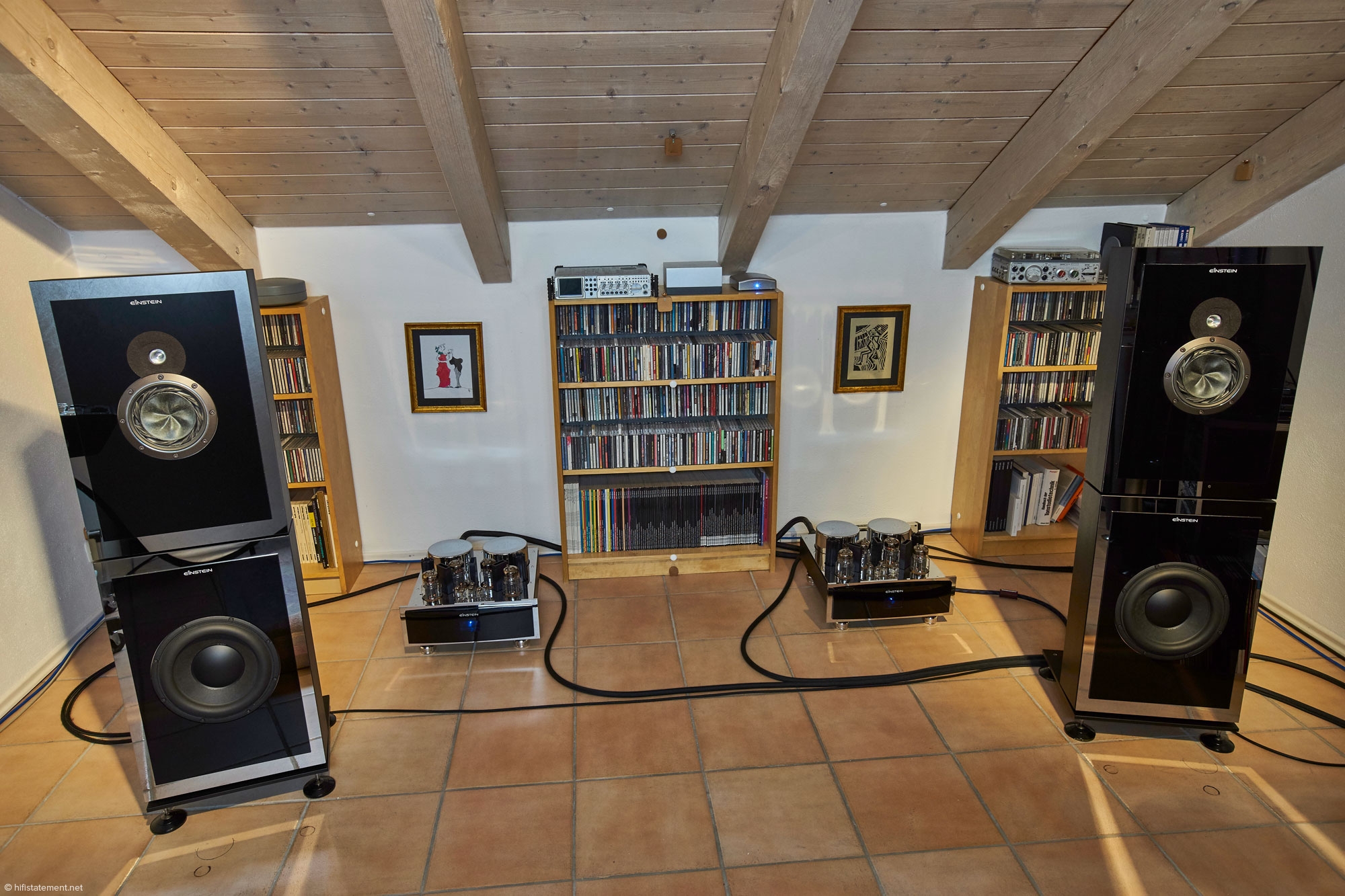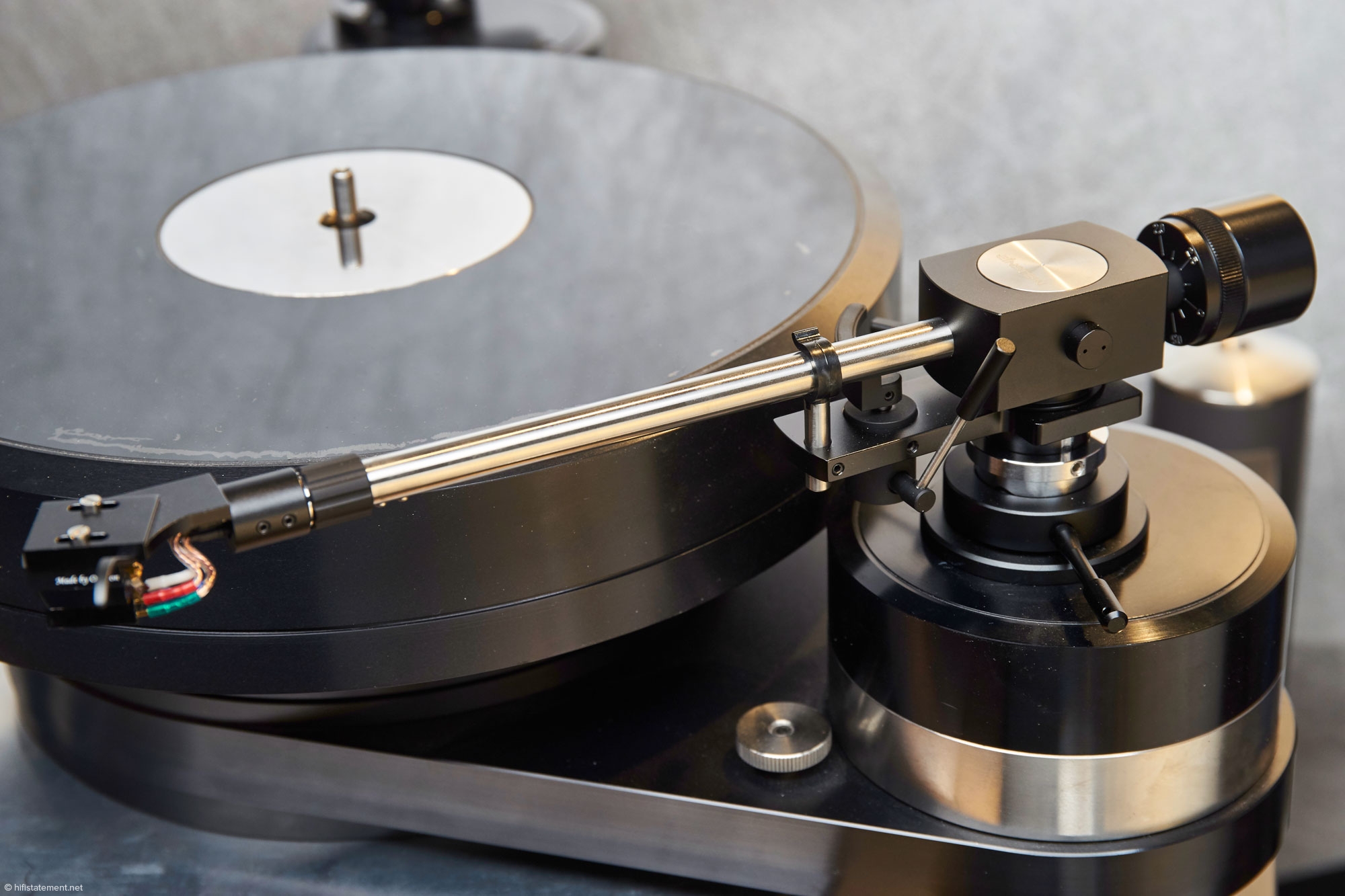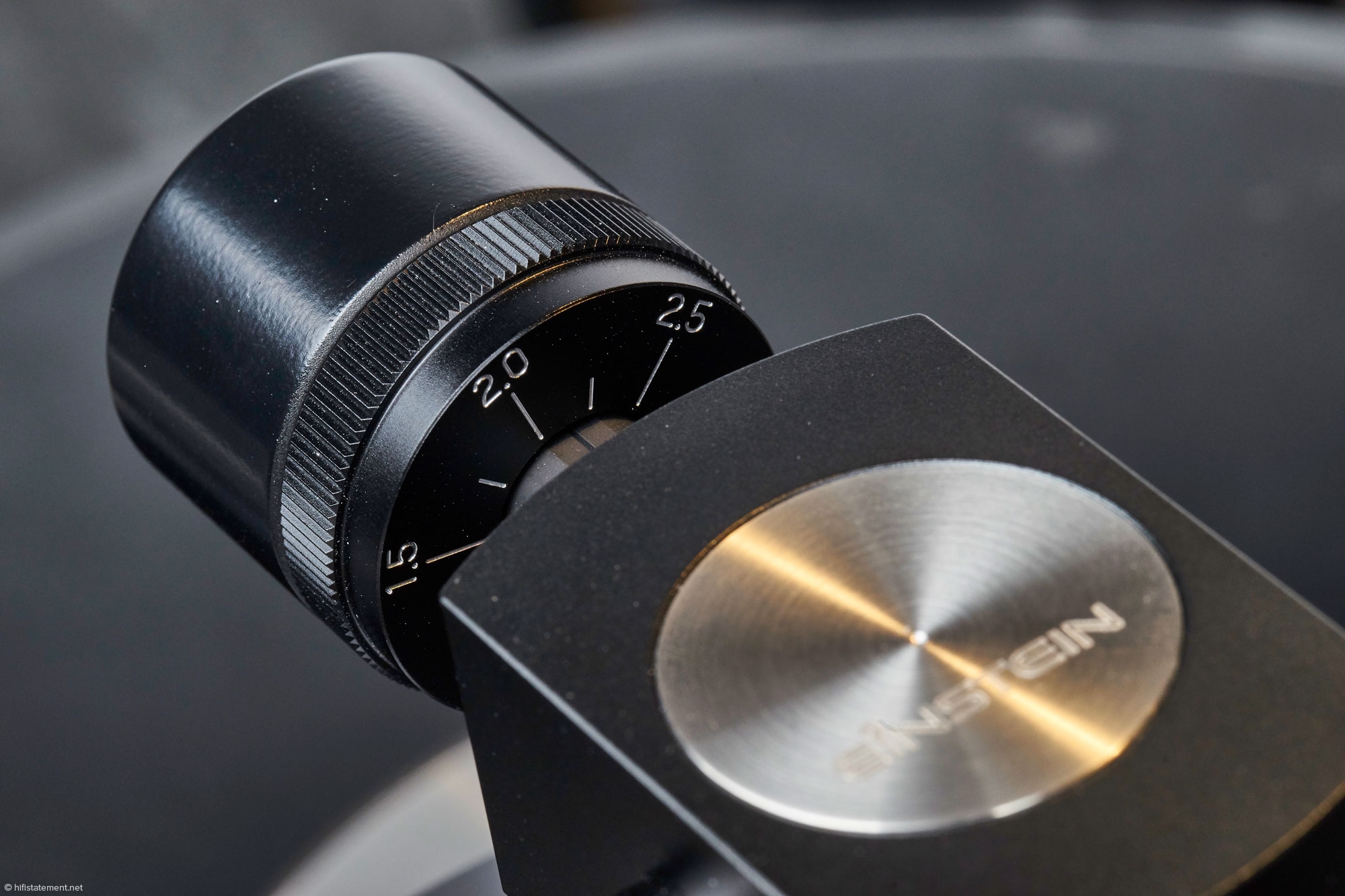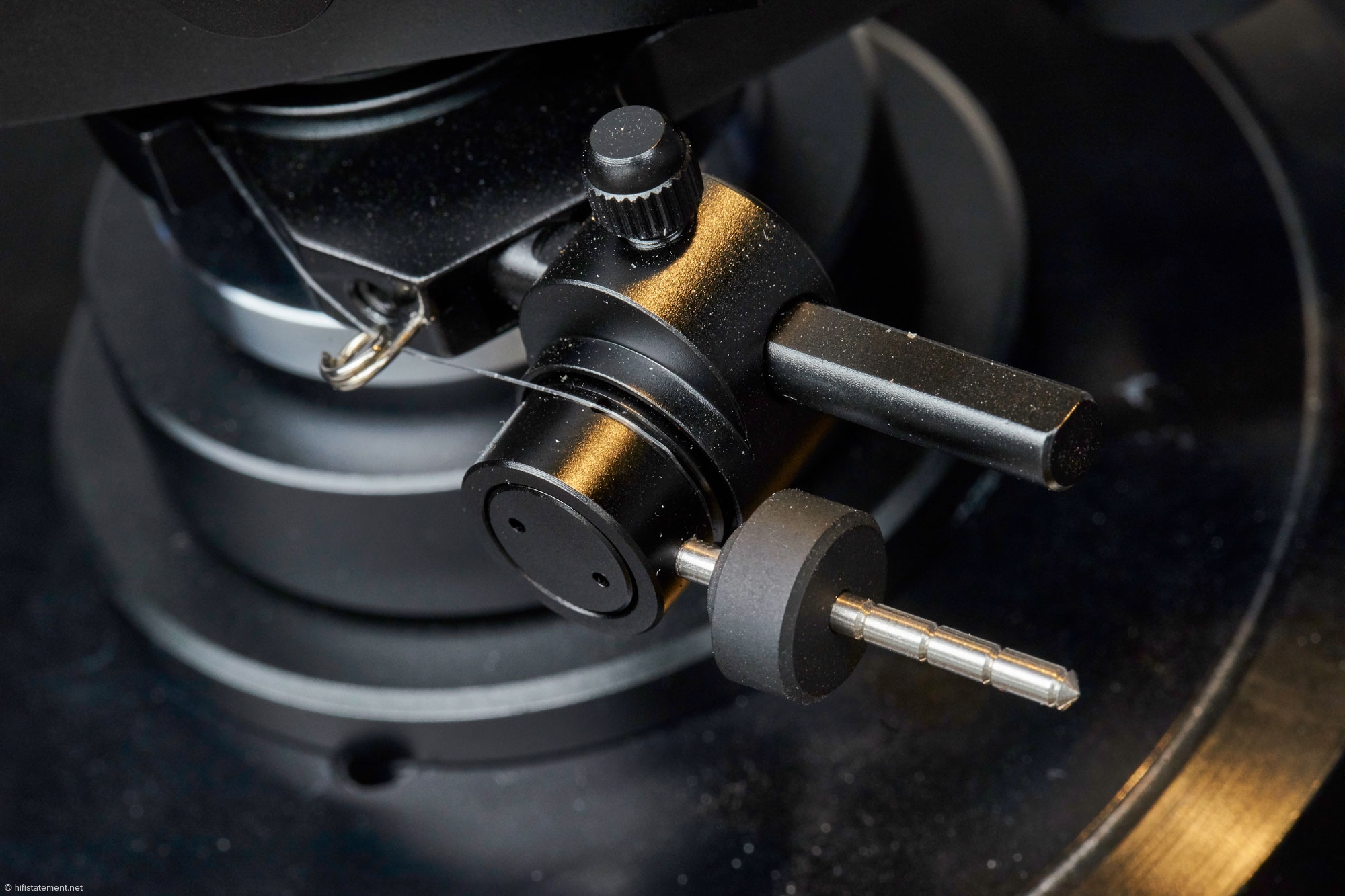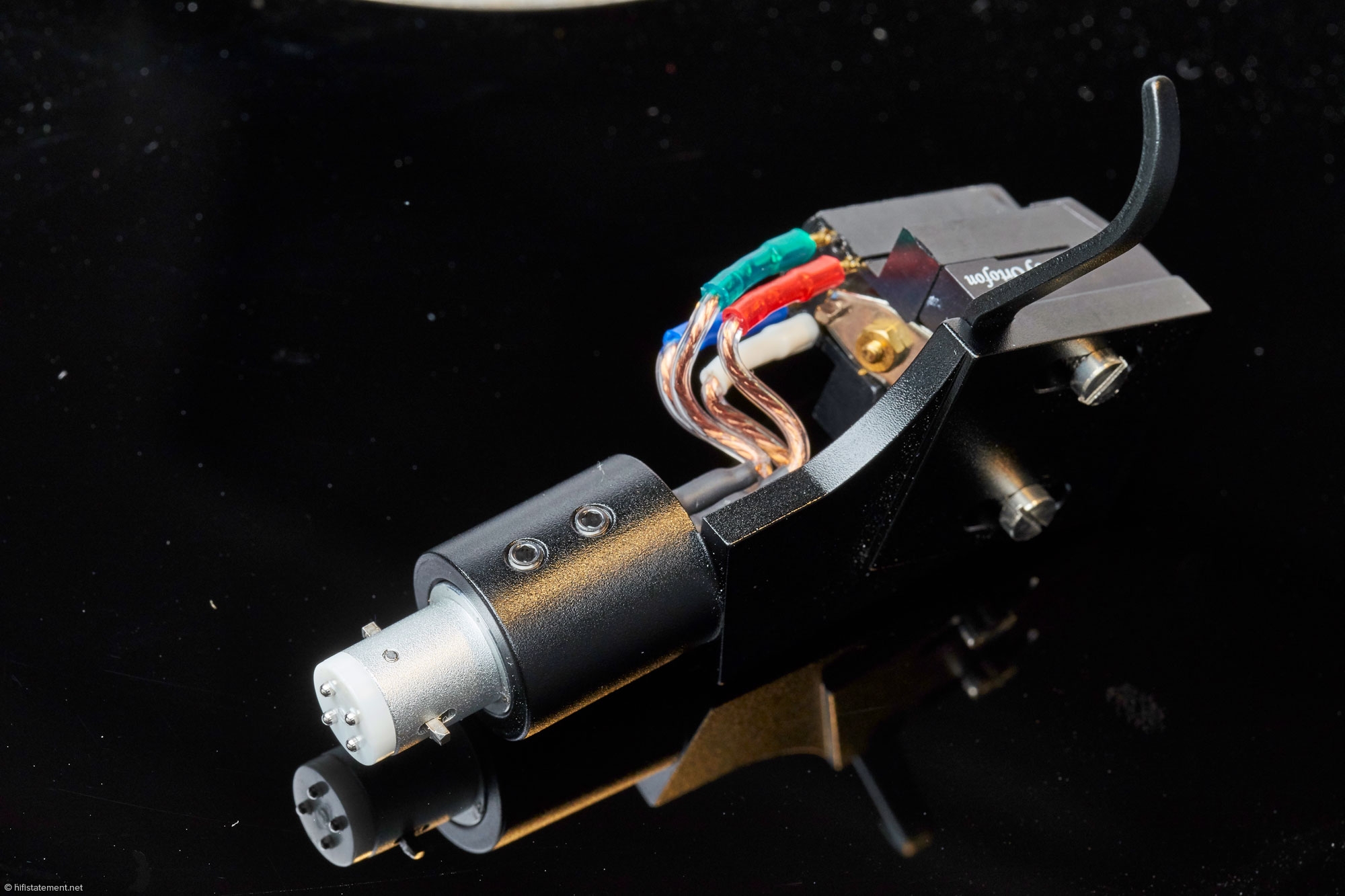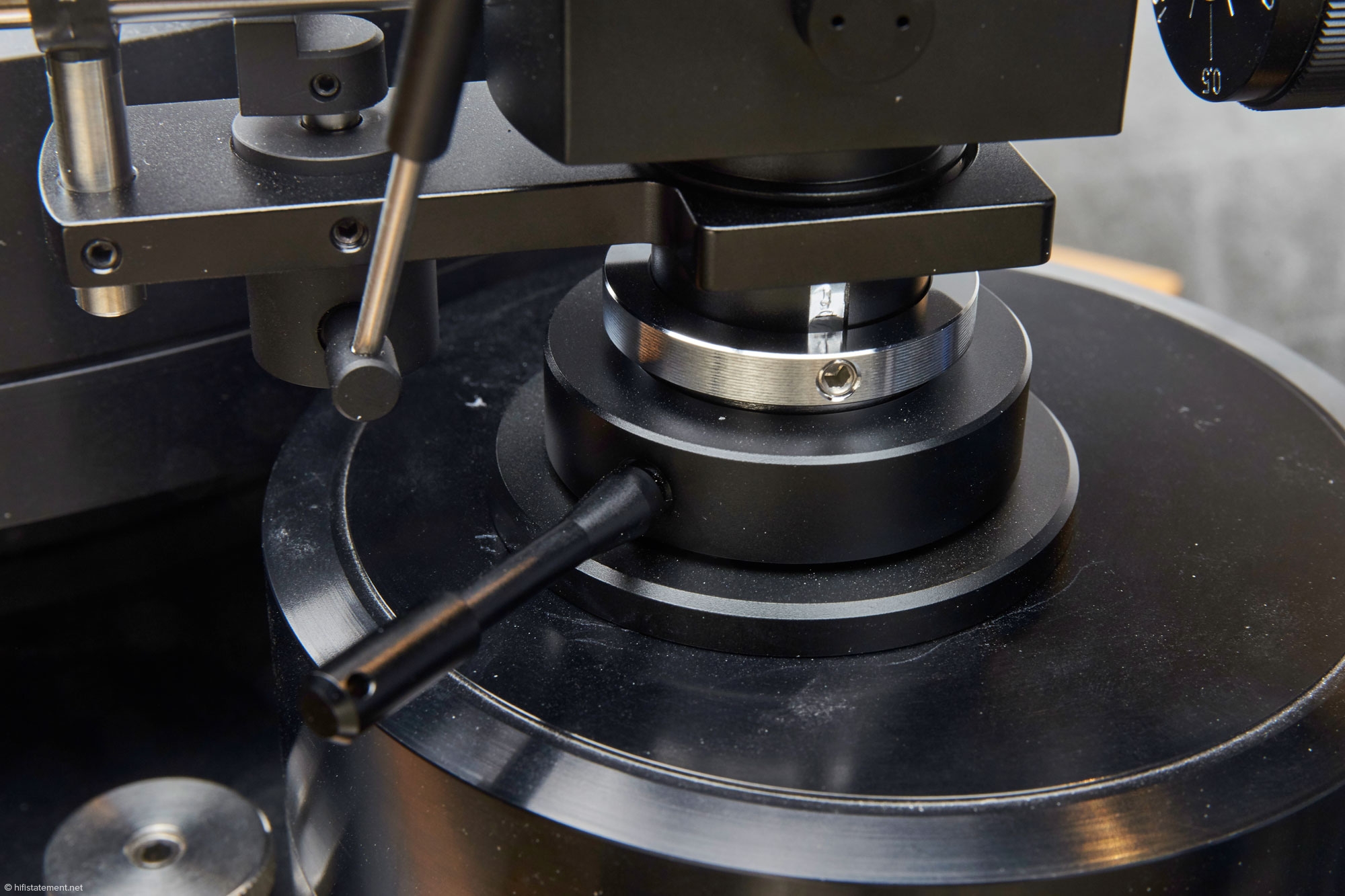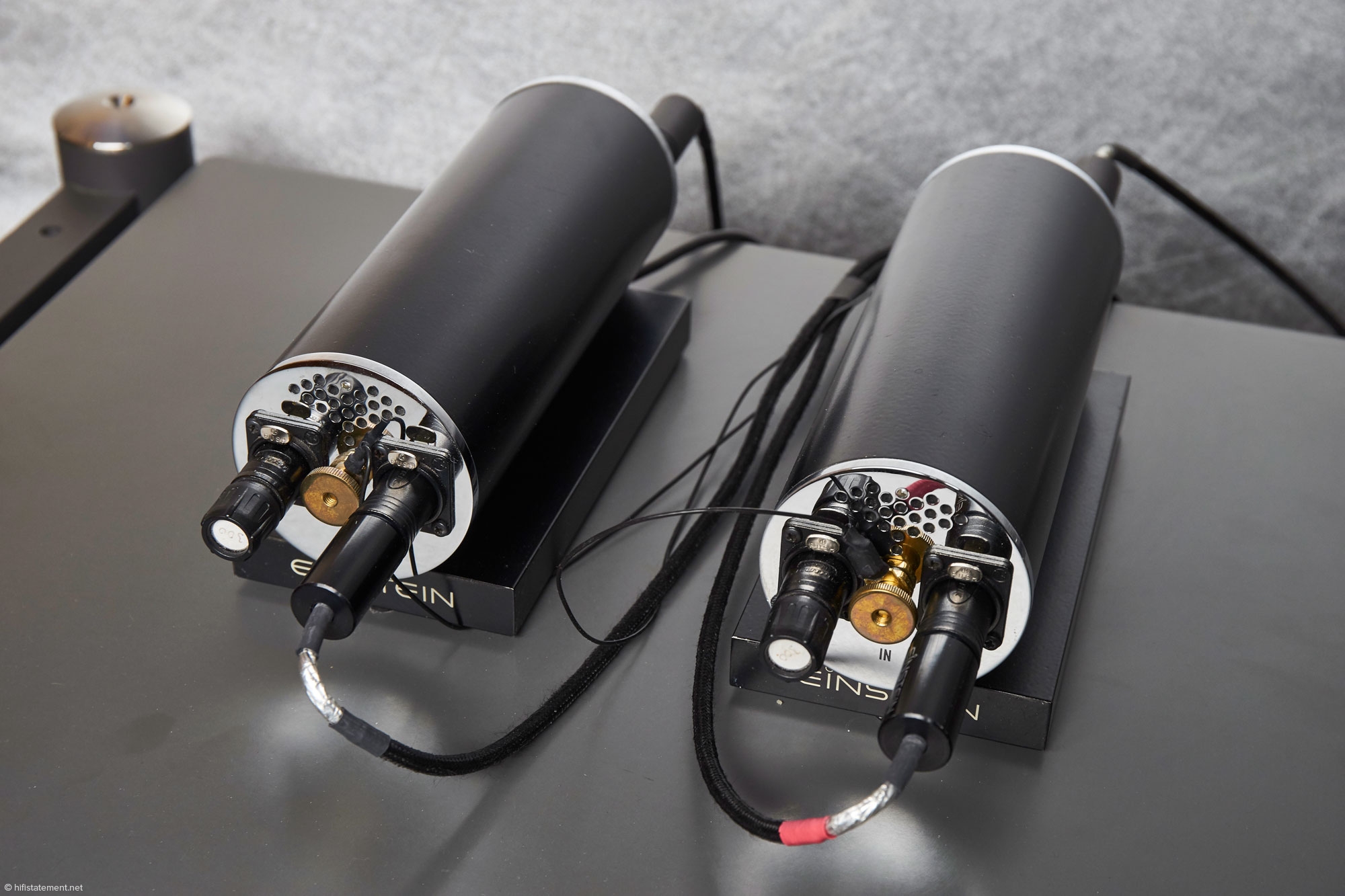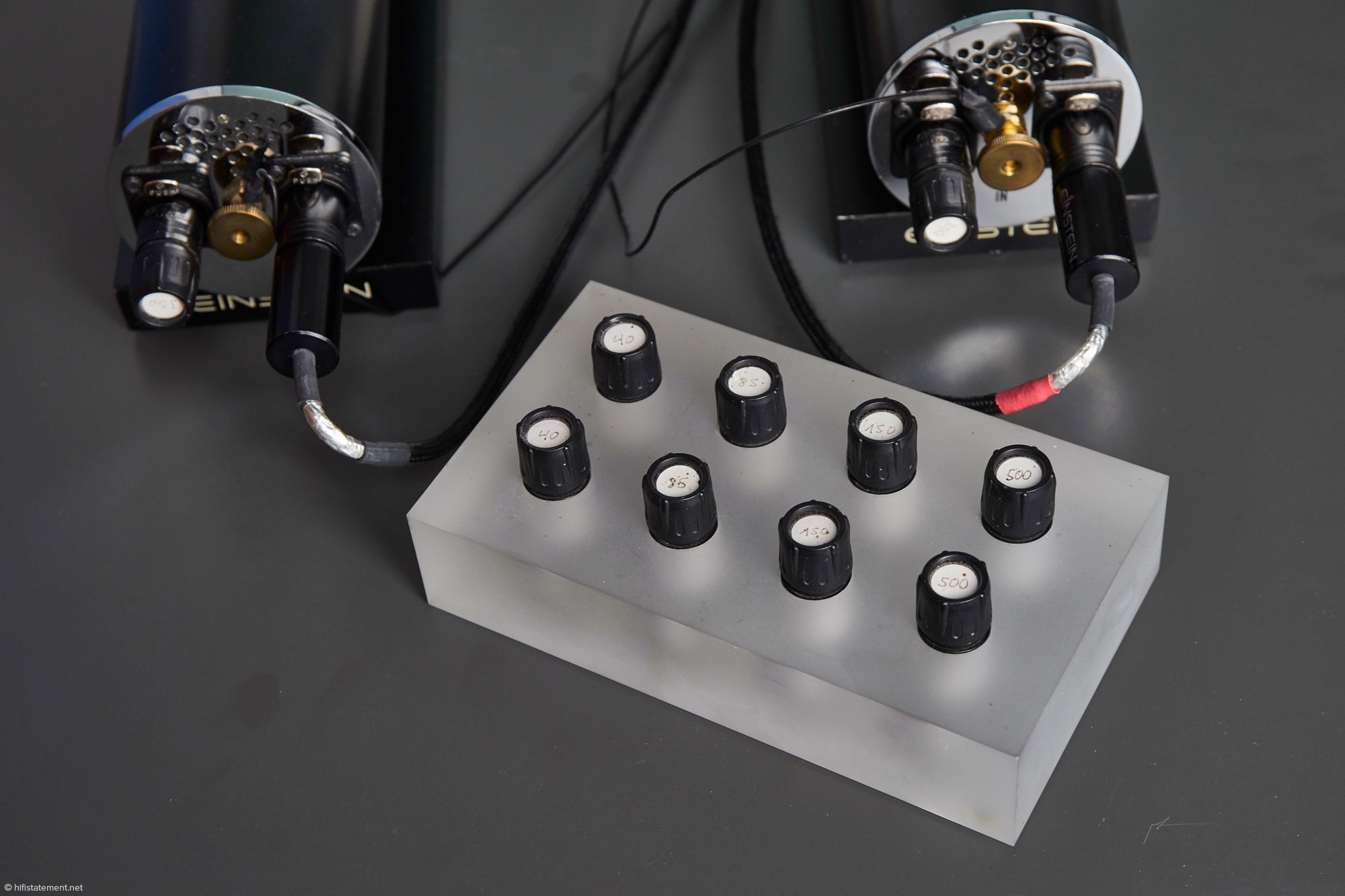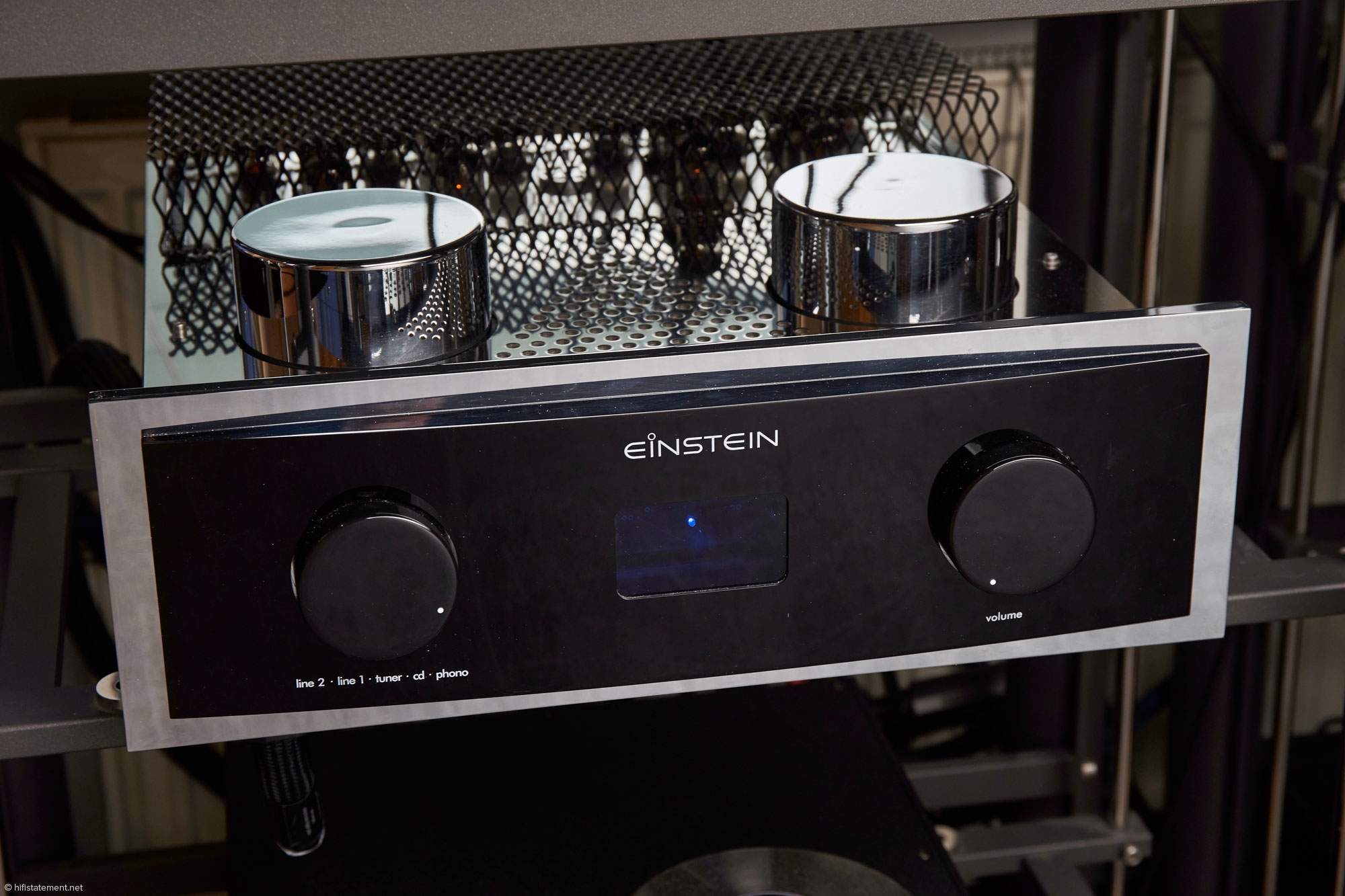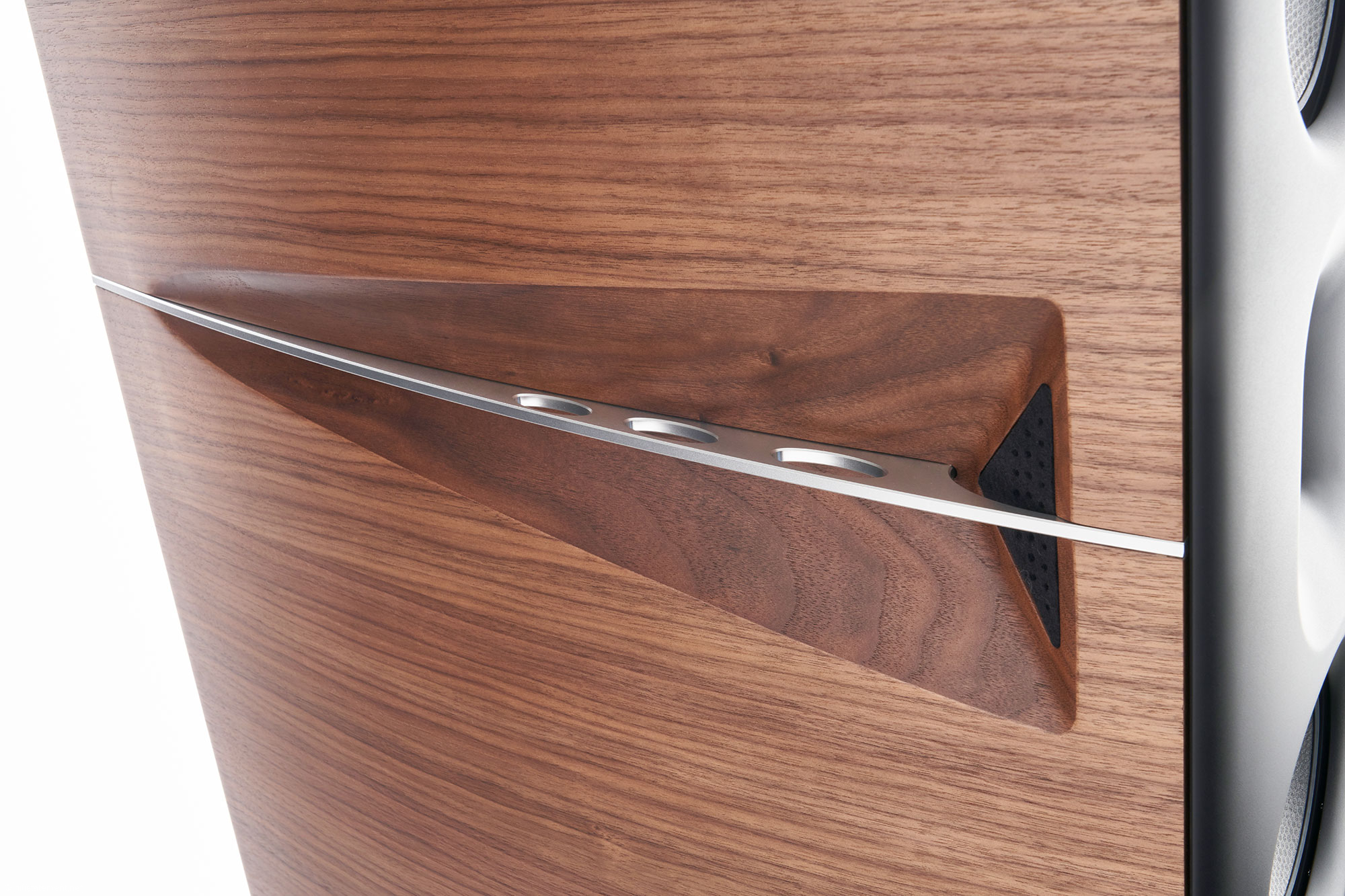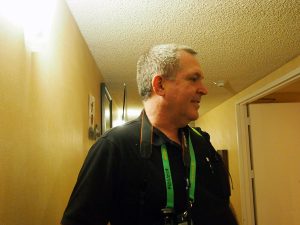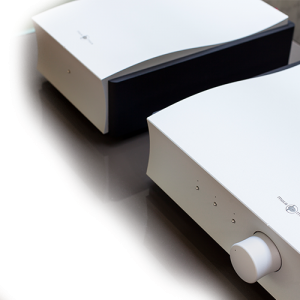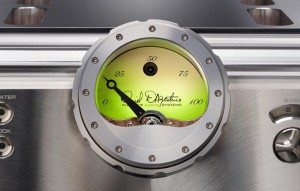Anyone who has ever looked into the hi-fi world in a little bit more intensive way knows that the arbitrary combination of well-reputed audio components does not necessarily lead to a guaranteed musical enjoyment. In the field of high-end audio, only very few manufacturers offer complete solutions—mainly those featuring a digital source. To my knowledge, Einstein is the only laudable analogue exception.
However, I do not want to anticipate: The analogue turntable, of which prototypes have been shown at trade fairs for years, is still awaiting its debut, which—probably—will happen at the end of this year. But even without it, the rich portfolio of the Bochum-based Einstein manufactory offers you even such alleged trivialities like cables or power bars. But before I continue to speculate about the turntable's future or write about my experience with Einstein's—almost—complete audio system, let me briefly look into the past.
Volker Bohlmeier, whom I got to know in Bochum in his first hi-fi store—in his second store, by the way, back when I jobbed during my student days—founded Einstein Audio almost 30 years ago. The first product was visually eye-catching as well as felicitous solid-state amplifier, whose circuitry concept had been developed by Rolf Weiler. Over the decades, this cooperation has proven to be a good one: Up to these days, Rolf Weiler still makes sure that Einstein's electronic components are always characterized by innovative technical solutions. A good example is the preamp's input selector, which avoids relays or switches in the signal path. For some time, the interior designer Annette Heiss has been responsible for Einstein's distinctive appearance. The team in Bochum is complemented by electronic engineer Uwe Gespers and radio and television master craftsman Rolf Wittig. To celebrate the decadal company anniversary in 2018, I planned a visit to the former mine building in Bochum.
Volker Bohlmeier had the The Pickup built by Ortofon's head of development Leif Johannson, according to his personal sonic concept.
Readers who have been following my writing activities and the publication of Hifistatement will find many Einstein components being old acquaintances: The excellent balanced phono stage The Turntable's Choice I tested way back at the beginning of 2005, and acquired it shortly thereafter. Since then, a phono preamplifier for me has to be balanced. Up to now I haven't heard anything better at this price. The already-mentioned preamplifier with the prosaic name The Preamp has been extensively worked on by our tube specialist Jürgen Saile years ago. Since the testing of the semi-active loudspeaker system Maestro GSE from AudioMachina has been carried out (to which project Volker Bohlmeier, in his function as distributor of the American manufacturer of premium aluminum speakers, had also brought along his preamp to join the other components), I would not want to miss this one in my audio chain. I had already publicly acknowledged the quality of the Einstein, upon the urging of colleague Wojciech Pacula in his review on Einstein's The Preamp and The Silver Bullet. (Go to www.highfidelity.pl to find this.) Some indication of how good The Pickup sounds can be found by going to our sound library (http://www.hifistatement.net/klangbibliothek?start=15).
A classic appearance: The Tonearm in the nine-inch version.
I am already familiar with the cartridge, the phono, and the preamp. The chain is completed by the tonearm named—you surely will have guessed its name—The Tonearm, with the OTL mono amplifiers, The Silver Bullet, and the semi-active three-way loudspeakers, The Pure. The latter were introduced during last year's High End show and are now available. Regarding the tonearm, we got one of the first available copies. That's why I have decided to take only a brief look on the already known components, but review the tonearm and speakers a little more in detail. Technical explanations of the OTLs that are being built in this form already for quite a while I gladly leave to colleague Jürgen Saile—which is justified by the fact that I'm not a proven tube expert. From this consideration up to the question whether Rolf Weiler or Volker Bohlmeier are well versed in all kinds of component types, it's not that far. Rolf Weiler is a well-known electronics specialist well beyond the hi-fi sector, and has also gained a vast experience with analogue turntables. But for the development of The Pickup cartridge, Volker Bohlmeier relied on the experience of an external specialist. In cooperation with Leif Johannson, who replaced Per Windfeld as chief designer at Ortofon, he has put his very specific sound concept into practice. If the EMT derivatives TU-2 and TU-3 were primarily driven by dynamics, the Pickup would have liked to have a little bit more of that plus a higher resolution, a broader spatial imaging, and better fine detail. Dynamics and the greatest possible proximity to the live experience have always been the first priority for Volker Bohlmeier. Components with an appealing smooth sound character weren't his cup of tea 35 years ago, and still aren't up to now.
A part of the solid bearing block and the traditional disc to adjust the tracking force.
The reason for his choice of a classic nine-inch tonearm did not really surprise me: In all the testing it has been clearly superior in terms of the joy of playing and vibrancy, compared to the 10 and 10.5 inch versions. The twelve-inch version, which will be presented at the High End, exudes a great sovereignty, but when the passionate guitarist and guitar collector has the choice between sovereignty and dynamics, he doesn't have to think for too long for which one to go—and that's why the nine-inch has become part of the complete system. By the way, the arm is manufactured in Japan by one of the most experienced specialists: Ishiama san not only builds them, but also has built the arms for Ikeda and Fidelity Research. In the case of Einstein's The Tonearm, he uses a straight tube for the first time. At first glance, the tube is entirely made out of stainless steel. After having performed a series of experiments with steel, aluminum and carbon tubes, eventually a stainless steel-aluminum sandwich was chosen, with the inner aluminum tube being full-face glued to the outer steel tube to optimize the resonance behaviour of the arm. The Tonearm comes up with a very complex bearing: Relatively large ball bearings are mounted to a solid bearing block, which has been designed to ensure a quiet, extremely resonance-free and precise operation.
A well-proven solution for compensating the skating force – in the best workmanship.
As with arms deriving from Japanese tradition, the Einstein also comes with a detachable headshell, allowing the adjustment of the azimuth after loosening two Allen screws. Fortunately, Volker Bohlmeier and Ishiama san paid particular attention to the alleged weak spot: Instead of using the usual single guide pin for defining the position of the headshell in the arm, two are used here instead. In addition, rhodium contacts are used for signal transmission, which are located in a Teflon cylinder specially made for this arm. After roughly adjusting the height of the arm, the extremely solid, mechanically fascinating base allows the fine adjustment of the VTA via a lever—as it used to be with the Micro Seiki. The effective mass of 18.5 grams makes the arm an ideal matchmaker for systems with medium and low needle compliance. Since Einstein – as already mentioned—also offers high-quality cables, it was no problem to get balanced cabling for The Tonearm. The Pickup's unusually thin connector pins—at that time my only point of criticism of this so vividly and homogeneously performing cartridge—are no longer a problem if you are a proud owner of an Einstein tonearm: there is a set of wires with extra-tight receptacles that perfectly match the pins of The Pickup.
The detachable headshell with guide pins top and bottom. The signal is conducted through rhodium contacts. The two Allen screws allow for the azimuth adjustment.
When asked, Volker Bohlmeier emphasizes that he has developed the arm using a variety of different cartridges, but it appears to me that The Tonearm and The Pickup are made for each other. Afore, the superbly worked AMG 12JT Turbo tonearm guided the Einstein system—and that to my fullest satisfaction. But in the Einstein arm, The Pickup inspired with a slightly larger room imaging, seeming even more impulsive and enthusiastic. The simplest explanation for this is that the Einstein pickup with its five grams higher effective mass helps the tonearm to put its sonic qualities in the right perspective. Perhaps another arm in The Tonearm's weight class could bring the cartridge to similar great heights. Be that as it may, this combination of tonearm and cartridge created in a German-Japanese-Danish cooperation runs up to an even higher sound level than The Pickup is able to in one of my own tonearms. I am already looking forward to work with Einstein's forthcoming twelve-incher.
Eye candy for every admirer of precision mechanics: the smoothly running height adjustment of the tonearm by means of a lever.
I hope you do not take my meanderings amiss: Even if I intended to describe the Einstein chain as a whole, I not always can resist the opportunity to occasionally listen to previously unknown components in my familiar environment. But from now on I will defy the temptation to write about it. From The Tonearm we move to The Turntable's Choice, or TTC in short, connected to it—as aforementioned—by a balanced Einstein cable. The gain of the balanced phono preamp is not variable and is designed to match the output voltage of MC cartridges. Due to the excellent signal-to-noise ratio and the very high overload stability, it furthermore harmonizes equally well with MCs with very low or even high output voltage.
Each of the two tubes contains two circuit boards for equalizing and amplifying the positive and negative half-waves of the phono signal. The power supplies are external.
Even if the two tubes, each equipped with two circuit boards, are fed by external power supplies, care should be taken regarding their positioning in the system. In the vicinity of strong power transformers they do not feel themselves particularly comfortable, which they acknowledge with a slight hum. It really would be a pity to cut down its outstanding signal-to-noise ratio and the thereof resulting dynamic and detail resolution abilities through a negligent placement. If one pays TTC the attention it deserves, then it enchants with a pitch-black background, before which its sonic abilities are revealed to be all the more radiant. Because even the finest room information doesn't get lost in the noise floor, one feels transferred into large, airy recording spaces, and enjoys an abundance of detail that is well-integrated into the musical flow. The enthusiasm of the musicians captivates—assuming, of course, the corresponding recording—and let's instantly forget all the hi-fi criteria. Oh yes, I intended to restrain myself from offering further sound descriptions, but I know and appreciate the TTC for over a decade now, so you should somewhat forgive me my effusiveness...
The impedance on which a cartridge operates can be determined from this selection of plugs. Special preferences can be therefore easily fulfilled.
Further on, the signal runs from the TTC to the preamp in solely balanced mode as well, as The Preamp has two balanced to go with its three RCA inputs. The inputs are each directly connected to a twin triode, which also serves as an input selector switch. The control knob on the front panel switches on the heating of the corresponding tube: The selection of inputs works without a switch or relay in the signal path. Facing so much purism, it is no longer surprising that Rolf Weiler also realized a volume control in which the potentiometer doesn't also lay in the signal path. The fact that The Preamp performs brilliantly in all disciplines of hi-fi and is to be regarded as a dynamic exceptionality, this Jürgen Saile has already written in his statement so that I can leave further comments on The Preamp apart. I prefer listening to music instead. In the second part of this review, we will discuss the OTLs briefly, the new loudspeaker system The Pure in greater detail and, eventually, the sound of the chain in full.
The preamp in the Artesania Audio Exoteryc rack, which allows the use of less flexible power cables despite the mains socket being placed in the front part of the bottom plate of the housing.
LISTENING EQUIPMENT
- Turntable: Brinkmann LaGrange with tube power supply
- Tonearm: AMG 12JT Turbo
- Cartridges: Lyra Etna, Einstein The Pickup
- Phono preamp: Einstein The Turntable's Choice (balanced)
- NAS: Melco HA-N1ZH60, WDMyCloud
- Streaming bridge: Auralic Aries Femto with SBooster BOTW P&P Eco
- D/A converter: Chord DAVE
- Preamp: Einstein The Preamp
- Power amp: Ayon Epsilon with KT150 tubes, Einstein The Poweramp
- Loudspeakers: Kaiser Acoustics Kawero! Classic
- Cables: HMS Gran Finale Jubilee, Swiss Cables Reference Plus, Goebel High End Lacorde, Habst Ultra III, Audioquest Diamond and Carbon, Cardas Audio Clear Network
- Accessories: PS Audio Power Regenerator P5, Clearaudio Matrix, Sun Leiste, Audioplan Powerstar, HMS wall sockets, Acapella Bases, Acoustic System Feet and Resonators, Artesania Audio Esoteryc, Harmonix Real Focus and Room Tuning Disks, Audio Exklusiv Silentplugs
MANUFACTURER'S SPECIFICATIONS
Einstein The Pick-Up
- Principle: Moving Coil
- Stylus shape: Shibata
- Frequency response: 20 - 30kHz ±3dB
- Output voltage: 0,4mV at 5cm/sek
- Channel balance: < 1dB at 1kHz
- Recommended tracking force: 2,3g ± 0,1g
- Coil impedance: 12Ω
- Dynamic compliance: 13µm/µN
- Tracking ability at 315 Hz: 80µm at 2,2g
- Vertical tracking angle: 20º
- Weight: 13g
- Price: 4.400 Euros
Einstein The Tonearm
- Length: 9 inch
- Effective length: 232mm
- Offset angle: 22,5º
- Effective mass: 18,5g
- Mounting holes: 34mm
- Mounting distance: 217mm
- Tonearm tube: stainless steel (outside), Aluminum (inside)
- Special features: stepless height adjustment via level, detachable headshell with precise locking system
- Price: 6.200 Euros
Einstein The Turntable's Choice
- Gain: 68dB (2500 times)
- Signal-to-noise ratio: >=80 dBTHD:<0,03%
- RIAA: passive
- Input impedance: adaptable
- Output impedance: 50Ω
- Output voltage: 10V
- Weight: 7,0 kg
- Price: 9.000 Euros
Einstein The Preamp
- Signal-to-noise ratio: >95dB
- THD: < 0,03%
- Output voltage: 2,5V/100Ω
- Output impedance: 50Ω
- Frequency range: 7Hz to 250kHz
- Dimensions (W/H/D): 430/170/410mm
- Weight: 20kg
- Price: 18.000 Euros
Einstein The Silver Bullet OTL
- Signal-to-noise ratio: >98dB
- Distortion at 1 kHz: <0,02%
- Output power: 80W/12Ω, 65W/8Ω, 45W/4Ω
- Damping factor: 95/8ΩWeight: 30kg / mono amp
- Dimensions (H/W/D): 24/43/49 cm
- Price per pair: 48.000 Euros
Einstein The Pure
- Principle: semi-active three-way speaker system
- Frequency response: 18Hz-30kHz
- Sensitivity: 89dB/8Ω
- Drivers: 26cm woofer, 15cm midrange, 2cm super tweeter
- Crossover: Subwoofer 18Hz-150Hz with active equalization, Midrange driver without any crossover, Horn tweeter with 6dB connection, switchable level control with four-stage IL precision switch
- Subwoofer: active, closed with integrated 700W ICE power amp, analogue crossover technology with adjustable frequency range and adaptable volume level for the woofer
- Dimensions (H/W/D): 120/40/15cm, 125 cm high incl. stand
- Weight (incl. stand): 100kg / each
- Recommended amplifier power: 15-200WPC/8Ω
- Price per pair: 44.000 Euro
EINSTEIN Audio Components GmbH
Prinz Regent Straße 50-6044795
Bochum, Germany
+49 234 9731512




